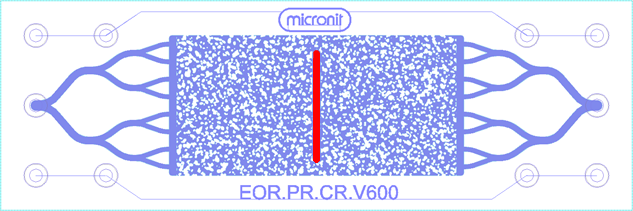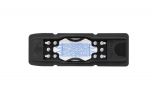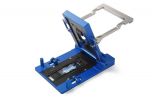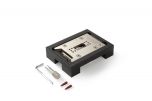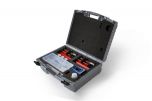EOR - Physical Rock Structure with vertical crack
SKU
EOR-Vertical-Crack
Availability:
In stock
As low as €660.00
per pack of 3
Enhanced Oil Recovery - Physical Rock Structure with vertical crack.
This porous medium chip uses our Enhanced Oil Rcecovery Physical rock structure (sandstone) combined with a vertical crack added to the model.
The models help to provide insight how such a crack or void wil influence oil recovery.
The crack is marked in red in the picture below and is a void in the actual structure.
This product is available with a 150, 400 or 600µm wide crack. The crack has a length of 8mm.
The surface of this product is hydrophilic by default, but a version with a hydrophobic coating is also available.
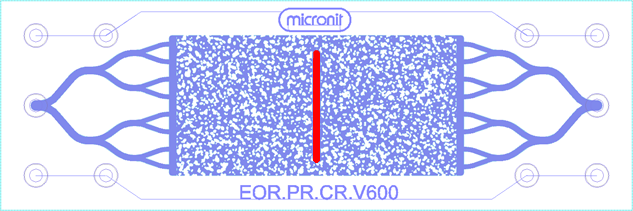
This model is established together with Prof. Sebastiao Lucena from the Universidade Federal do Ceará.
| Unit of measurement | pack of 3 |
|---|---|
| Alternative item references | 03200, 03204, EOR.PR.CR.V150; 03201, 03205, EOR.PR.CR.V400; 03202, 03206, EOR.PR.CR.V600 |
| Interface type | Topconnect |
| Chip thickness | 1.8mm |
| Chip material | Borosilicate glass |
| Number of inlets | 1 |
| Number of outlets | 1 |
| EOR network type | Physical Rock Structure (Sandstone) - Vertical Crack |
| Icon | Label | Description | Type | Size | Download |
|---|---|---|---|---|---|
 | EOR PR 20.2 Crack 150µm | Drawing for the EOR porous medium chip with a Physical Rock Network that contains a 150µm crack. Items 03200 and 03204. | 143.6 KB | Download | |
 | EOR PR 20.2 Crack 400µm | Drawing for the EOR porous medium chip with a Physical Rock Network that contains a 400µm crack. Items 03201 and 03205. | 144.3 KB | Download | |
 | EOR PR 20.2 Crack 600µm | Drawing for the EOR porous medium chip with a Physical Rock Network that contains a 600µm crack. Items 03202 and 03206. | 144.3 KB | Download |
Customer Questions
We found other products you might like!

